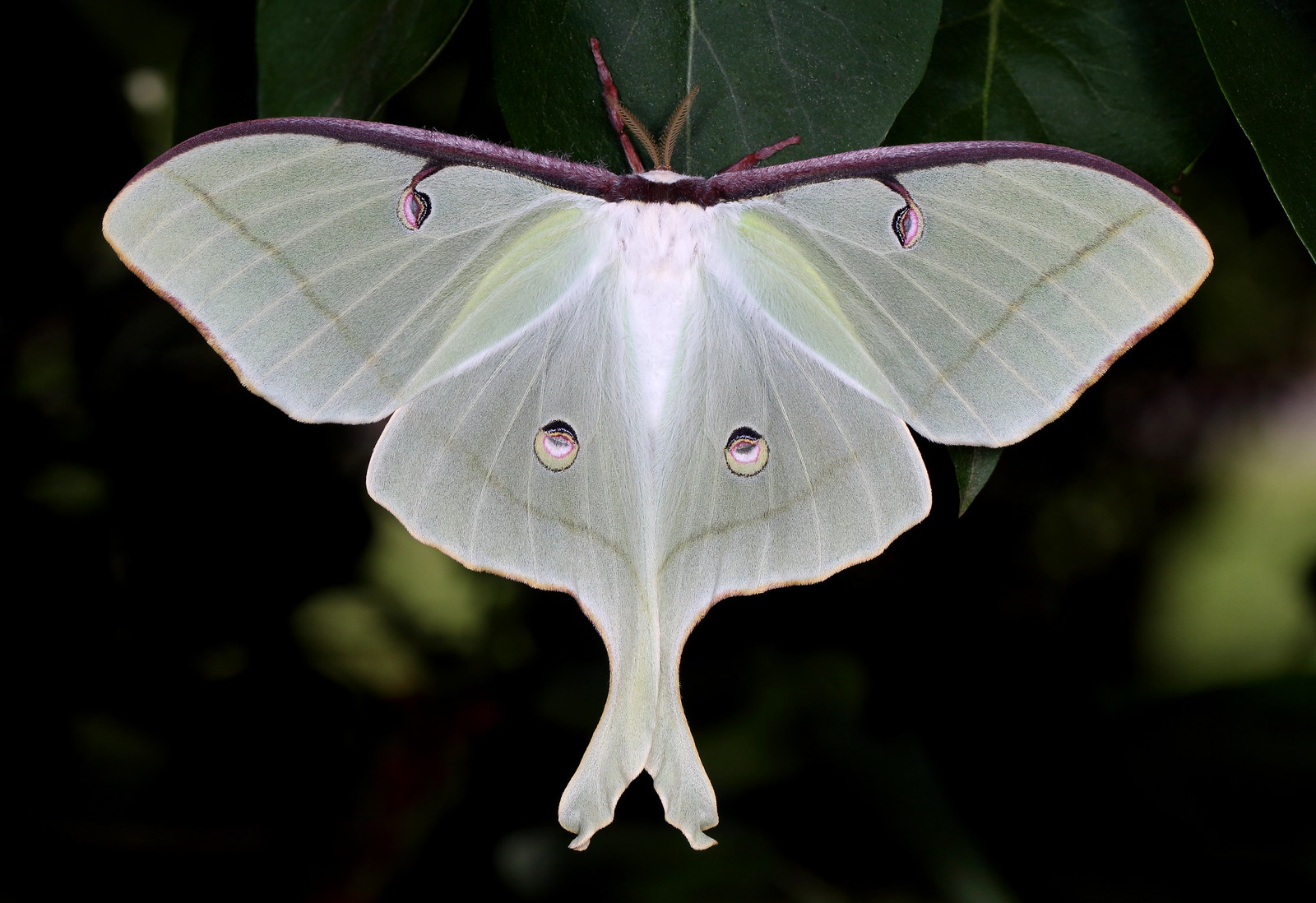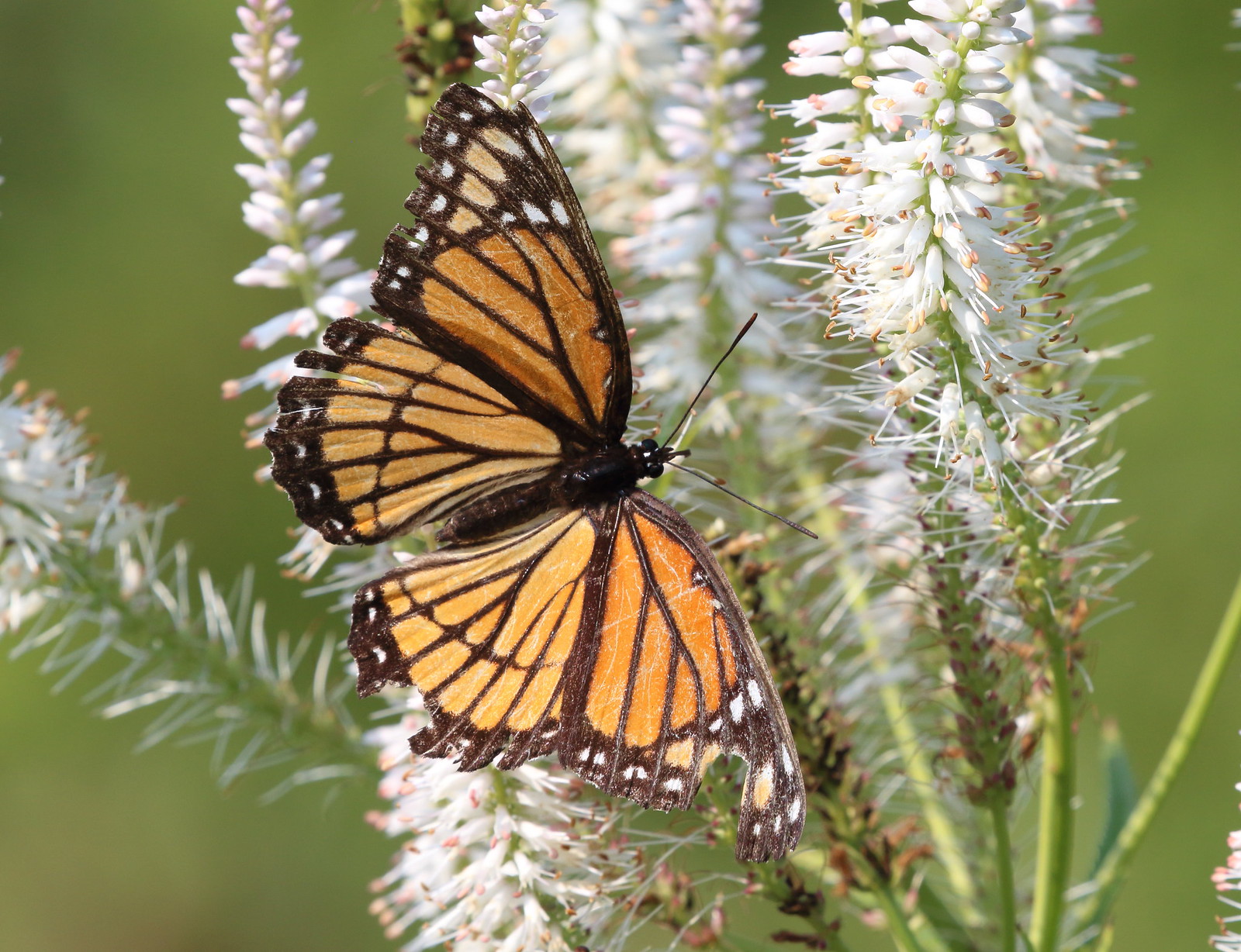 Mourning cloak butterfly by Mark Sturtevant, on Flickr
Mourning cloak butterfly by Mark Sturtevant, on FlickrI had come across a number of large cocoons on a tree. I brought them home, and one of them successfully emerged and here it is. It's a promethea moth (Callosamia promethea), which is one of our giant Saturniid moths.
 Promethea moth by Mark Sturtevant, on Flickr
Promethea moth by Mark Sturtevant, on FlickrMy giant moth fix is normally handled by raising them from eggs, and this is easily done by purchasing either eggs or cocoons by mail. Here is a luna moth (Actias luna) that I had raised from an egg.
 Luna moth, female by Mark Sturtevant, on Flickr
Luna moth, female by Mark Sturtevant, on FlickrBack to butterflies. This is our Eastern tiger swallowtail (Papilio glaucus). I like butterflies that show 'battle damage'. This one had been visiting our backyard garden every day for several days, and each time I saw it there was a bit more missing.
 Resilience. by Mark Sturtevant, on Flickr
Resilience. by Mark Sturtevant, on FlickrThe next pictures tell an interesting story. This is the red-spotted purple butterfly (Limenitis arthemis) ...
 Red-spotted purple butterfly by Mark Sturtevant, on Flickr
Red-spotted purple butterfly by Mark Sturtevant, on Flickr... And this is the viceroy butterfly (Limenitis archippus). I like the damage on this one.
 Viceroy butterfly by Mark Sturtevant, on Flickr
Viceroy butterfly by Mark Sturtevant, on FlickrSo what is the story? Last summer I found this rather gnarly looking caterpillar.
 Vicery butterfly caterpillar by Mark Sturtevant, on Flickr
Vicery butterfly caterpillar by Mark Sturtevant, on FlickrMy preliminary identification was that it was a red-spotted purple caterpillar, which was good since this is a common butterfly and so one should wonder where the caterpillars were. But then I found the same caterpillar online, only it was labelled as a viceroy caterpillar. What the heck?
Looking further, I learned that the two species are closely related, and that their caterpillars are nearly identical. To make matters even more challenging they feed on many of the same plants. Viceroys and r.s.p's will even form inter-species hybrids in the wild: https://xerces.org/blog/my-first-hybrid This is weird!
After much consideration, I've decided this is the viceroy caterpillar (it has a few more spines than the r.s.p. cat). But I could easily be wrong.
Thanks for looking!
 Viceroy butterfly by Mark Sturtevant, on Flickr
Viceroy butterfly by Mark Sturtevant, on Flickr